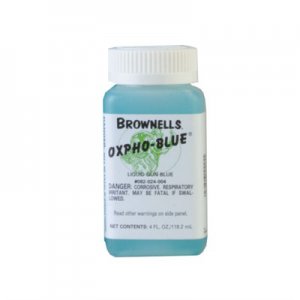- Joined
- Jun 7, 2013
- Messages
- 10,452
The cold blue products that I have tried seem to be a mixture of copper sulphate, a bit of acid and selenium; the copper sulphate plates copper onto the bare steel, and the selenium turns it black, a very thin coating of very limited durability. As Bill Hudson relates, any oil or fingerprint on the metal disrupts the bluing process with cold blue processes, that is the beauty of the hot blue process that I described, the parts do not have to be hardly cleaned at all, in fact a thin film of light oil can cover the whole part; when it is immersed in the niter, it visibly burns off with a glow, completely covered by the niter, which is a 50/50 mixture of sodium nitrate and potassium nitrate, and is the lowest melting point of any salt mixture; individually, they melt at over 1,000 deg F. at the mixture of 50/50 the temp. is less than half that, and will be a slush at under 300 F.
I was introduced to the bath when I was an apprentice, the company used it for a tempering bath for heat treating of tool steels, I accidently discovered that it would blue steel parts also, only several years ago I came across a article in American Machinist that further described the process in detail.
I was introduced to the bath when I was an apprentice, the company used it for a tempering bath for heat treating of tool steels, I accidently discovered that it would blue steel parts also, only several years ago I came across a article in American Machinist that further described the process in detail.


